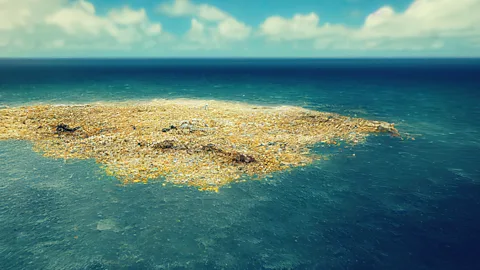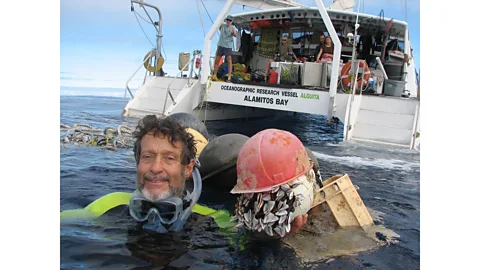Visualising the Great Pacific Garbage Patch
 Shutterstock
ShutterstockIn 1997 Captain Charles Moore was sailing from Hawaii to California when he noticed a steady stream of plastics bobbing in the ocean. He had discovered the Great Pacific Garbage Patch.

Over a thousand miles from land in the central North Pacific Ocean, the boat captain and oceanographer Captain Charles Moore puzzled over the source of the litter.
"It can't be a trail of breadcrumbs like Hansel and Gretel leading me home," he recalled thinking. "This has got to be a larger phenomenon."
After two years of research and modelling, he returned to investigate. "That's when we had the aha moment," he says. Using a net system to sample the surface of the ocean, he found six times as much plastic as plankton floating in the ocean.
Moore had discovered the largest of five garbage patches around the world. Created by swirling ocean currents known as gyres, these act like a trash vortex, sucking in plastics and shifting constantly.
Since its discovery, the Great Pacific Garbage Patch (GPGP) has often been depicted in the media as a floating mass of plastic, and referred to as a trash island. However, contrary to popular belief, there is no surface on which to stand and it can't be seen from space.
"It wasn't a mountain of trash, or a field of trash, it wasn't even a patch of trash," says Moore. Instead, the ocean looked like a murky soup, made up of different sized plastics.
 Algalita Marine Research and Education
Algalita Marine Research and EducationThis makes visualising the patch difficult. "There is no such thing as a photo of the Great Pacific Garbage Patch," says Moore. Satellites, drones and Google Earth struggle to capture an overview of the highly mobile garbage patch, he says.
In the following 25 years, our understanding of garbage patches has deepened, with some attempting to quantify and clean them up. But many misconceptions still exist about these remote garbage patches, where few people can venture themselves.
